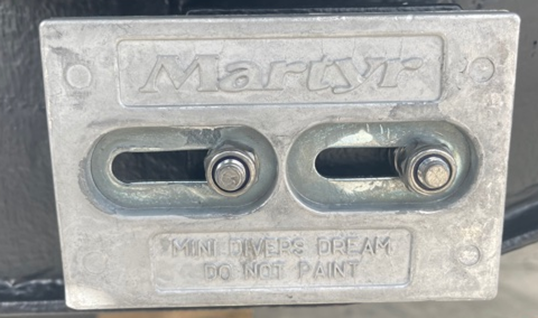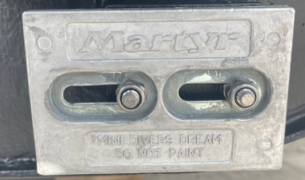VESSEL BULLETIN – anode inspection and replacement
ANODE INSPECTION AND REPLACEMENT.
Recently there has been an increase in corrosion identified in some of the MRNSW fleet and in particular this has been highly noted in the Ocean Cylinder style vessel.
This bulletin however applies to all of the aluminium fleet operated by MRNSW.
Anodes can be located on you vessel hull, outboard engines and inside cooling water systems in marine diesel engines. Your crew should be familiar of the location of these anodes. Engine anodes are generally replaced every engine service and typically included in a “service kit”
If the vessels sacrificial anodes are doing their job properly, it will corrode and eventually become inactive. It can be hard to tell when the anode has stopped working (unless your other metals start to show signs of corrosion) however there are many available indicators that appear once a certain layer of metal has corroded away. You should change your anode at least every 12 months or when it has corroded to half its original size to ensure it is working to its optimum level. Make sure during installation there is no paint on the metal surface that is in contact with the anode and remember not to apply any paint or other products to anodes to ensure good electrical contact.
Corrosion rates can increase depending on the saltiness and temperature of the water. The higher the salt content and the higher the temperature, the more corrosion will occur. Other factors involved in increasing corrosion include pollution in the water, lack of oxygen for metal (covered up by barnacles or bolts) and the existence of certain types of bio-organisms. Corrosion may also be caused if a vessel is used on a dry berth where the engines may be still touching the water which will create a current between the hull and water bypassing the sacrificial anodes.
Although the anode connectivity may not be the only cause of electrolysis this is one of the first preventative measures to take, alongside regular cleaning and flushing the vessel with fresh water.
ANODE INSPECTION:
What do I look for?
- Check the anode bolt connection is clean and secure.
- How much has the anode deteriorated from new? The anode should be replaced when it gets to 50% of its original mass or a maximum of 12 months.
- Check that for excess marine life growth and keep anodes clean.
Can units replace vessel anodes?
- Yes. Use the same specific anode. Anodes are installed to suite the vessel. There are many sizes and shapes of anode. It is recommended to replace the anode like for like.
- When installing a new anode ensure that there is no paint or other product breaking the connection.
- Do no paint or use product on anodes.
- A step by step guide shall be published as to the replacement process.

What happens if there is minimal or no deterioration on the anode?
- The Vessel may not be properly connected to the anode.
- There may be a lose electrical or the vessel may not be “earthed”.
- There may be the potential for electrolysis to another part of the vessel or infrastructure.
- The vessel may be kept out of water “dry berth system” or trailer.
This is only one part of the continual care and maintenance of your vessel. It is however key to the reduction of corrosion in the fleet.
There will be an additional bulletin released regarding washing and flushing the internal “enclosed compartments” of the vessels.
If you do find any areas of concern please report directly to your Zone Duty Operations Manager.
Safe Voyages,
Kelvin Parkin//Senior Manager – Fleet.
Marine Rescue NSW.
